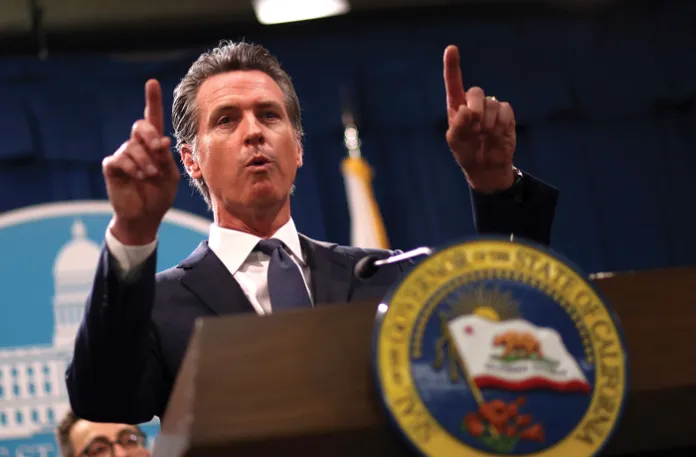CA officials address conspiracy theories tied to Prop 50 ballots
California Secretary of State Shirley Weber has addressed and refuted conspiracy theories circulating on social media that claim mail-in ballots for the state’s November 4 special election, specifically regarding Proposition 50, are designed to reveal how individuals voted. The controversy centers on the small holes on ballot envelopes, which some Republicans allege allow election officials to see votes, notably targeting Proposition 50-a ballot measure backed by Democrats that could secure additional congressional seats ahead of the 2026 midterms. Weber clarified that these holes are an accessibility feature for sight-impaired voters and do not disclose voter choices. She also emphasized option voting options that ensure ballot secrecy. The conspiracy, which gained millions of social media views, was debunked by comments explaining that ballots have two sides, preventing any vote disclosure through the envelope holes. Proposition 50, supported by Governor Gavin newsom, aims to implement a new congressional map created by an independent commission, as required by California’s constitution, and if approved by voters, it would considerably favor Democrats by converting several Republican-held seats into democratic or Democratic-leaning districts.The situation highlights ongoing political tensions around redistricting and election integrity in California.
California officials address growing conspiracy theories tied to Proposition 50 ballots
California Secretary of State Shirley Weber is pushing back on conspiracy theories on social media sites that mail-in ballots for the state’s Nov. 4 special election are purposefully designed to disclose how people voted.
Weber spent Monday refuting claims by some Republicans that holes on ballot envelopes allow election officials to see how Californians voted on Proposition 50, the controversial ballot measure that could allow Democrats to lock in five more House seats ahead of next year’s midterm elections.
“The small holes on ballot envelopes are an accessibility feature to allow sight-impaired voters to orient themselves to where they are required to sign the envelope,” Weber said in a statement.
Weber added that voters can insert ballots in return envelopes that don’t reveal how they voted, cast ballots at early voting stations, or vote in person on Nov. 4.
Weber’s decision to “set the record straight” was prompted by conspiracy theories alleging that mail ballots received by 23 million Californians are purposefully designed to reveal the votes of people who opposed the measure.
“If California voters vote ‘NO’ on Gavin Newscum’s redistricting plan, it will show their answer through a hole in the envelope,” Libs of TikTok posted on social media platform X on Sunday. “All Democrats do is cheat.”
The post had 5.6 million views as of Tuesday morning.
Several people commenting on the post pointed out that all a person needs to do to avoid the issue is turn their ballot over.
One user, @BasicallyElonM, wrote, “How many times are you going to show off that you don’t understand how there’s two sides to a piece of paper? [Make America Great Again], how many times are you going to let someone try and influence you that thinks you don’t understand that there are two sides to a piece of paper?”
Republicans have been complaining about the speed at which Proposition 50 has moved and said it is vulnerable to election errors.
The state, which is battling a $12 billion deficit, is already cleaning up one multimillion-dollar mess it made after mailing inaccurate guides about the special election. The 2025 Voter Information Guide, which was mailed in late September to 8.5 million voters to provide data about Proposition 50, incorrectly labeled District 27 as District 22, according to the secretary of state’s office.
Proposition 50 is a ballot measure backed by Gov. Gavin Newsom (D-CA) and Democrats that was triggered in response to President Donald Trump telling Texas to change its maps to give Republicans a five-seat advantage in next year’s midterm elections.
Unlike Texas, where state lawmakers have control over drawing the state’s congressional map, California’s process is more complicated. Its constitution requires that an independent redistricting commission draw the map and that voters approve any changes. That means even though the state legislature passed the proposed map, voters will decide in three weeks whether it will be used for the 2026, 2028, and 2030 elections.
FIVE CALIFORNIA REPUBLICANS TARGETED BY NEWSOM REDISTRICTING PLAN
If voters greenlight it, it would turn three Republican-held seats into safe Democratic seats and turn two others into seats that lean Democratic.
Specifically, the map would change districts held by Republican Reps. Kevin Kiley and Doug LaMalfa in Northern California. In Southern California, Republican Reps. Darrell Issa and Ken Calvert would be at risk, and in the Central Valley, Republican Rep. David Valadao would have a much harder time getting reelected if the map is passed.
" Conservative News Daily does not always share or support the views and opinions expressed here; they are just those of the writer."




